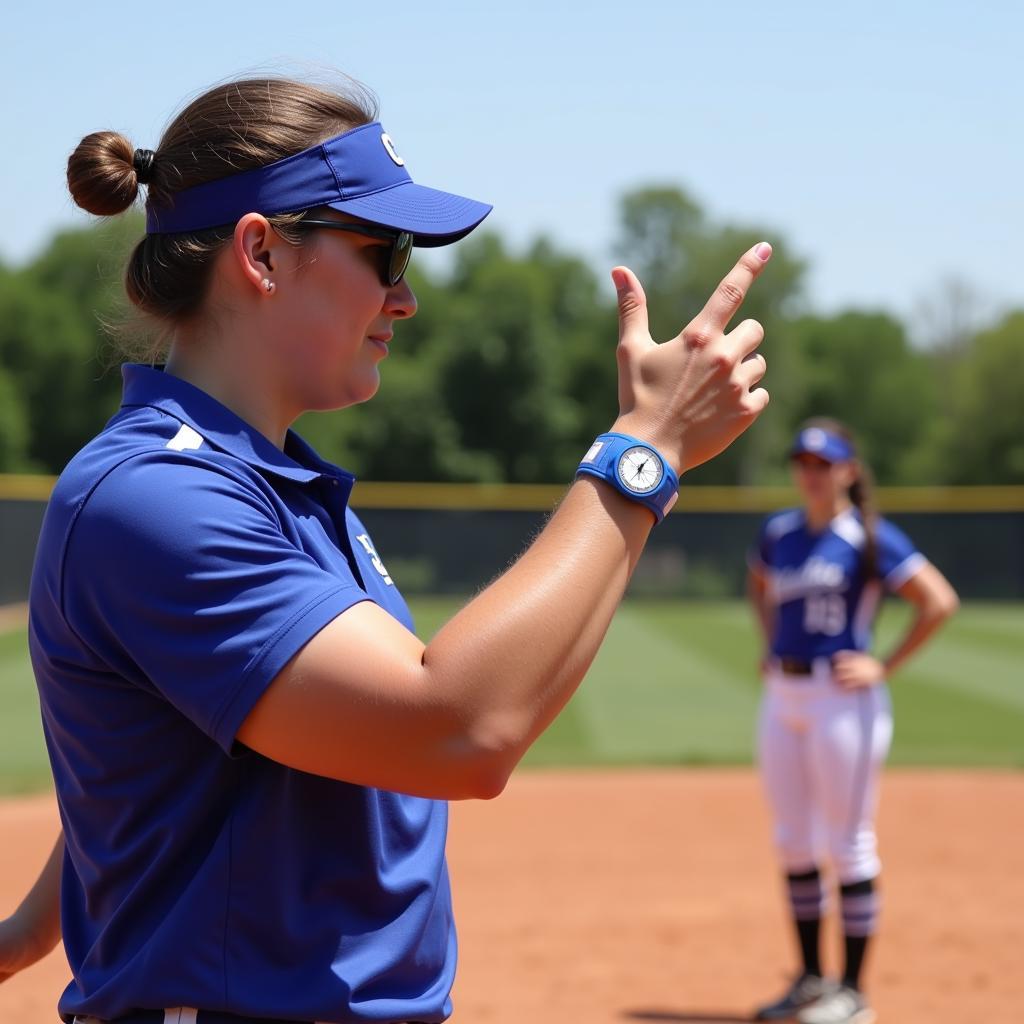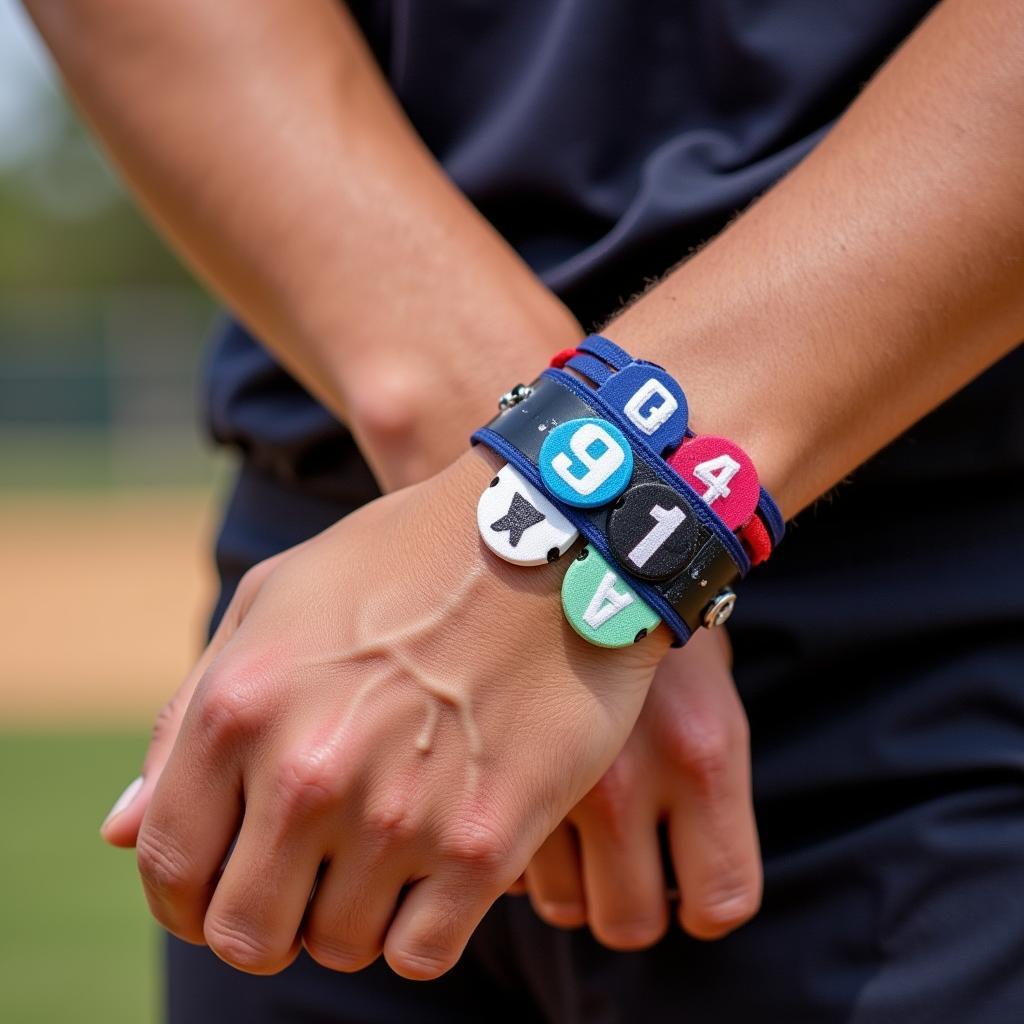Wristband Signals for Softball: Your Guide to Silent Communication
October 16, 2024Wristband signals are a critical part of softball strategy, allowing coaches to relay plays and instructions to players on the field without the other team knowing. Imagine this: you’re up to bat, bases loaded, and a runner on third. A quick glance at your coach’s wristband signals tells you everything you need to know – bunt, steal, or swing for the fences!
 Softball coach giving signals to players
Softball coach giving signals to players
Understanding the Importance of Wristband Signals
Wristband signals in softball serve as a secret code between the coach and players. They are particularly crucial in situations where:
- Speed is key: Time is of the essence in softball, and vocal communication can slow things down. Wristband signals offer an instant and efficient way to relay plays.
- Stealth is required: Openly calling out plays allows the opposing team to anticipate and counter your strategies. Wristband signals maintain the element of surprise.
- Situations are complex: With multiple runners on base and different scenarios unfolding, wristband signals simplify communication and minimize confusion.
 Close-up of softball wristband signals
Close-up of softball wristband signals
Deciphering the Code: Common Wristband Signals
While each team develops its own unique system, some common wristband signals include:
- Numbers: Each digit on the wristband can represent a specific play. For example, “1” might signal a bunt, while “2” indicates a steal.
- Colors: Different colored areas on the wristband can signify different categories of plays, such as offensive or defensive strategies.
- Combinations: Combining numbers, colors, and even the sequence of touches provides endless possibilities for creating complex plays.
The Benefits of Mastering Wristband Signals
Implementing and practicing wristband signals offers significant advantages:
- Enhanced Teamwork: When players and coaches are on the same page, it fosters trust and improves overall team coordination.
- Strategic Advantage: The element of surprise keeps your opponents guessing and allows you to dictate the pace of the game.
- Reduced Errors: Clear communication minimizes misunderstandings and costly mistakes on the field.
Tips for Creating and Using Wristband Signals
- Keep it Simple: Start with a basic system that’s easy to remember and gradually add complexity.
- Practice Makes Perfect: Regularly rehearse the signals to ensure everyone understands their meaning and can react quickly.
- Switch it Up: Don’t be afraid to change your signals periodically to keep your opponents guessing.
Conclusion
Wristband signals are more than just hand gestures; they are a language of their own, essential for success in softball. By mastering this silent form of communication, you can outsmart your opponents, execute plays flawlessly, and ultimately, enjoy more wins on the field. So, gather your team, develop your code, and watch your softball strategy reach new heights!